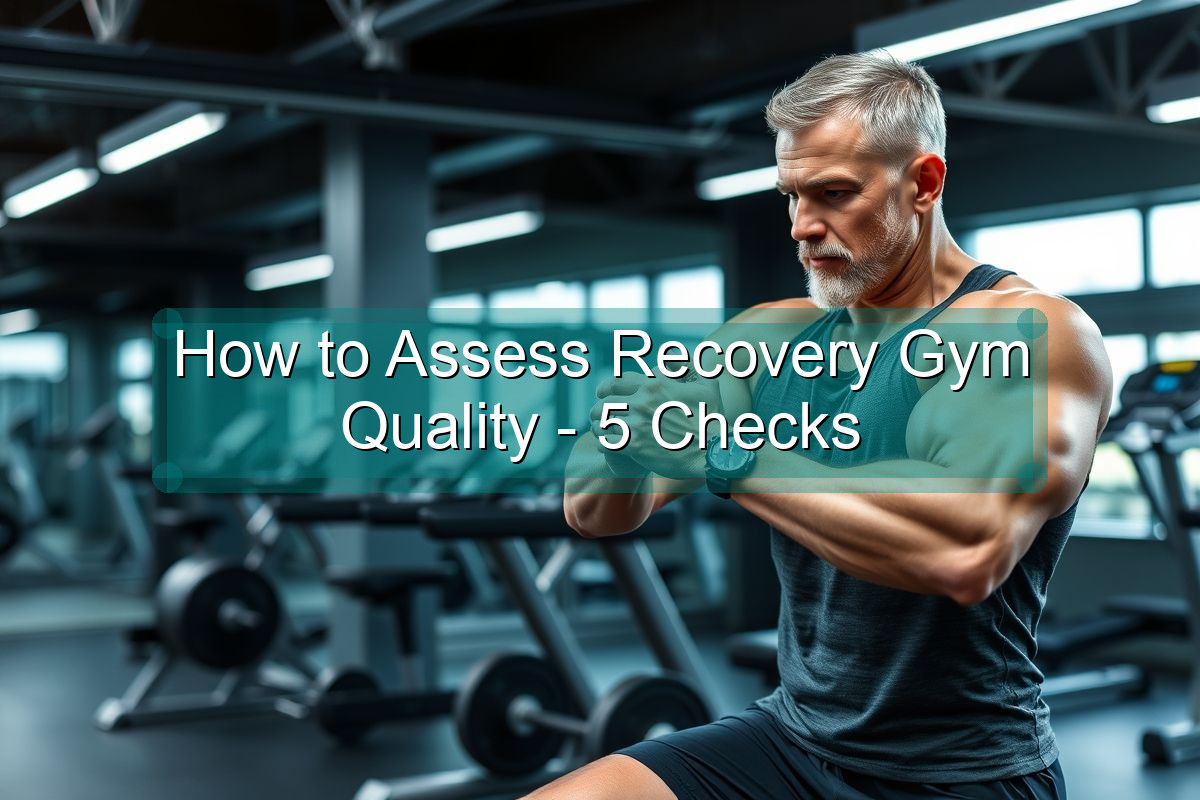How to Assess Recovery Gym Quality – 5 Checks
Finding the right recovery gym can be a game-changer for your fitness journey and overall well-being. It’s more than just a place to stretch; it’s an investment in your body’s ability to perform, recover, and thrive. But with so many options available, how do you separate the gems from the gimmicks? This article outlines five crucial checks to ensure you choose a recovery gym that truly meets your needs and helps you reach your goals. Don’t settle for less than the best when it comes to your recovery; use these guidelines to navigate the options and find the perfect fit.

Equipment Variety and Quality
Assessing the Range of Recovery Tools
A top-tier recovery gym should offer a diverse selection of equipment, catering to various recovery modalities. Look for options like compression therapy boots, cryotherapy chambers, infrared saunas, and percussion massage guns. This variety allows you to tailor your recovery sessions to your specific needs and preferences. A limited selection might restrict your progress and prevent you from experiencing the full benefits of a dedicated recovery space.
Checking for Equipment Maintenance and Hygiene
Cleanliness and proper maintenance are non-negotiable. Inspect the equipment for wear and tear, and ensure it’s clean and sanitized. A well-maintained gym demonstrates a commitment to client well-being and professionalism. Neglect in this area can not only hinder your recovery but also pose health risks. Pay attention to the overall cleanliness of the facility, including restrooms and common areas.
Understanding the Technology Behind the Tools
Modern recovery gyms often incorporate advanced technology. Ask about the science behind the equipment and how it benefits the body. A knowledgeable staff can explain the principles behind each modality and guide you on their proper usage. Understanding the technology empowers you to make informed decisions about your recovery plan and maximize the benefits of each session.
Staff Expertise and Guidance
Qualifications and Certifications of Trainers
The staff’s expertise is crucial for effective recovery. Inquire about the qualifications and certifications of the trainers and therapists. Look for certifications in areas like athletic training, physical therapy, or sports massage. Certified professionals possess the knowledge and skills to assess your needs and guide you through appropriate recovery protocols.
Personalized Recovery Plans and Assessments
A quality recovery gym should offer personalized assessments and tailored recovery plans. A one-size-fits-all approach won’t address individual needs and limitations. A thorough assessment will consider your fitness level, training regimen, and any existing injuries to create a customized plan that optimizes your recovery.
Availability and Accessibility of Staff
Ensure the staff is readily available to answer questions and provide guidance. Easy access to knowledgeable professionals enhances your recovery experience and allows for adjustments to your plan as needed. A responsive and supportive staff demonstrates a commitment to client success and satisfaction.
Facility Atmosphere and Amenities
Cleanliness and Hygiene Standards
A clean and hygienic environment is essential for a positive recovery experience. Check for cleanliness in all areas, including equipment, restrooms, and changing rooms. A pristine environment promotes relaxation and minimizes the risk of infection. A commitment to hygiene reflects the gym’s professionalism and respect for its clients.
Comfort and Relaxation Features
Recovery should be a relaxing and rejuvenating experience. Look for amenities that promote comfort, such as comfortable seating areas, calming lighting, and a tranquil atmosphere. These features contribute to a positive and stress-free recovery environment, enhancing the overall effectiveness of your sessions.
Accessibility and Convenience
Consider the gym’s location, operating hours, and accessibility. Choose a location that is convenient for you and offers flexible scheduling options. Easy accessibility ensures you can incorporate recovery sessions seamlessly into your routine.
Pricing and Membership Options
Transparency and Clarity of Fees
Understand the pricing structure and membership options before committing. Look for transparent pricing with no hidden fees. Clear and upfront pricing allows you to make informed decisions and budget accordingly.
Value for Money and Included Services
Assess the value offered by different membership tiers. Consider the included services and amenities in relation to the cost. Choose a membership that aligns with your budget and provides the best value for your recovery needs.
Flexibility and Cancellation Policies
Review the gym’s cancellation policy and membership flexibility. Life circumstances can change, so it’s important to understand the terms and conditions should you need to cancel or modify your membership. Flexible options provide peace of mind and protect you from unexpected charges.
Community and Social Environment
Sense of Community and Support
A positive and supportive community can enhance your recovery journey. Look for a gym that fosters a sense of community among its members. A supportive environment can provide motivation and encouragement, making recovery a more enjoyable and sustainable process.
Opportunities for Interaction and Connection
Opportunities for interaction and connection with other members can create a sense of belonging and shared goals. Group classes, workshops, or social events can foster a supportive community and enhance your overall experience.
Feedback Mechanisms and Communication Channels
A good recovery gym will value client feedback and provide clear communication channels. Look for opportunities to provide feedback and ask questions. Open communication ensures that your needs are addressed and contributes to continuous improvement.
Conclusion
Choosing the right recovery gym is a crucial step in prioritizing your health and fitness. By carefully assessing these five key areas – equipment, staff, facility, pricing, and community – you can confidently select a gym that aligns with your needs and empowers you to achieve your recovery goals. Remember, investing in a quality recovery gym is an investment in your overall well-being.
